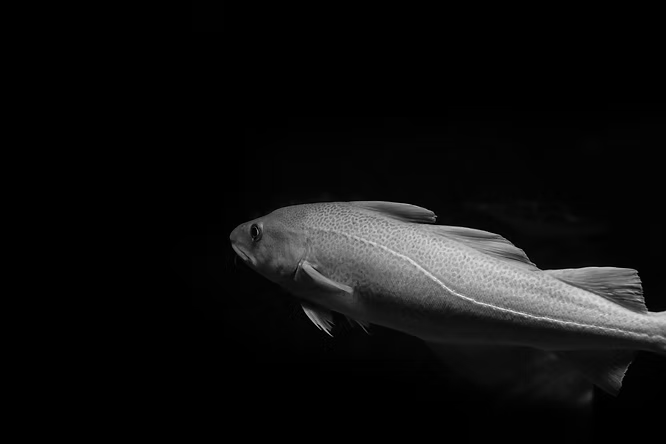Description and Behavior
The Atlantic cod (Gadus morhua) is one of the most commercially important fish species in the western world. Recognisable by a chin barbel, three dorsal fins, two anal fins, and a broom-shaped tail, the cod is larger and longer-lived than its Pacific relatives. While some individuals may live up to 25 years, reach 200 cm in length, and weigh as much as 96 kg, most weigh closer to 30 kg. Their coloration ranges from brown to green or gray on the dorsal side, fading to a lighter ventral side, with small, smooth scales.
Two closely related species in the same genus are the Pacific cod (Gadus macrocephalus) and the Greenland cod (Gadus ogac).
World Range and Habitat
Atlantic cod inhabit temperate waters, from shallow coastal zones to deep waters near the continental shelf. Their range stretches from Greenland to North Carolina, as well as Iceland and European coasts from the Bay of Biscay to the Barents Sea. The northeast Arctic stock—often referred to by the Norwegian name skrei, meaning “the wanderer”—is the largest population, notable for its migratory behavior compared to non-migrating coastal cod.
Feeding Behavior and Ecology
Atlantic cod are omnivorous, feeding mainly at dawn and dusk on invertebrates and fish. The northeast Arctic cod is also known for cannibalistic tendencies. Historically, Atlantic cod were dominant predators in the northwest Atlantic, alongside haddock, flounder, and hake, consuming prey such as herring, capelin, shrimp, and snow crab. However, dramatic population declines have shifted this balance, allowing former prey species to rise as new top predators in the ecosystem.
Larval cod feed primarily on krill, larval copepods, and small crustaceans or fish, highlighting their role in multiple levels of the food web.
Life History
Atlantic cod are among the most fecund marine fishes. Depending on size, females can produce between 2.5 and 9 million eggs during a single spawning season. Spawning occurs annually in winter and early spring, with external fertilization taking place near the seafloor. Optimal conditions require water temperatures of 0–12°C and sufficient oxygen levels. Cod typically reach sexual maturity between ages two and four, though some may not spawn until about seven years of age.

